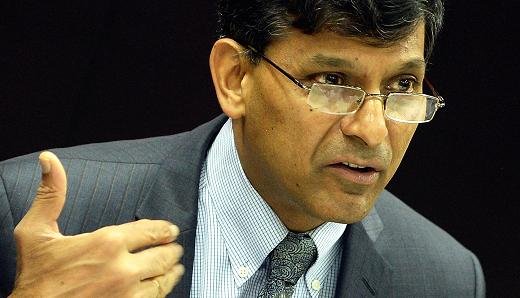Bengaluru– Clean up of a bank’s balance sheet was more important than growth, as evident from the lesson every other country that had faced financial stress has learnt, Reserve Bank of India (RBI) Governor Raghuram Rajan said on Wednesday.
“To the question of what comes first, clean up or growth, I think the answer is unambiguously clean up!” Indeed, this is the lesson from every other country that has faced financial stress,” Rajan said at an interactive session with captains of industry and trade here.

Terming the slower credit growth as a silver lining message, Rajan said banks have not been lending indiscriminately in an attempt to reduce the size of stressed assets in an expanded overall balance sheet, which bodes well for future slippages.
“It is important that the clean-up proceeds to its conclusion, without any resort to regulatory forbearance once again, Rajan said addressing about 300 members of Assocham trade body on ‘Resolving Stress in the Banking System’.
Asserting that the regulator (RBI) cannot substitute for the banker’s commercial decisions or micro-manage them or even investigate them when they (decisions) are being made, the governor said in most situations, the regulator could at best warn about poor lending practices when they were being undertaken and demand that banks hold adequate risk buffers.
“The important duty of the regulator is to force timely recognition of NPAs (non-performing assets) and their disclosure when they happen. Forbearance may be a reasonable but risky regulatory strategy when there is some hope that growth will pick up soon and the system will recover on its own,” Rajan reiterated.
Regretting that bankers sometimes turn around and accuse regulators of creating the bad loan problem, the governor said the truth was bankers, promoters and circumstances created it (bad loan problem).
“Everyone – banker, promoter, investors, and government officials – often urge such (risk) a strategy because it kicks the problem down the road, hopefully for someone else to deal with. The downside is that when growth does not pick up, the bad loan problem is bigger, and dealing with it is more difficult,” the governor noted.
As a regulator, the RBI has the difficult task of bringing the system back on track when a bad loan is allowed to accumulate through forbearance or non-recognition.
Clarifying that the slowdown in public sector bank lending in certain sectors since early 2014 was a consequence of the past build-up of stressed loans, the governor asserted that the cessation of the regulator forbearance and the asset quality review in mid-2015 were not responsible for it (slowdown).
“High distressed exposures in certain sectors were already occupying PSB (public sector banks) management attention and holding them back. The only way for them to supply the economy’s need for credit, which is essential for higher economic growth, was to clean up and recapitalize,” Rajan affirmed.
Referring to the proposal for easier monetary policy to reduce the bad debt problem, the regulator said such a policy would bring no relief to a heavily indebted promoter.
Sometimes, easier monetary policy is proposed as an answer to reducing the bad debt problem. For the heavily indebted promoter, however, easier monetary policy will typically bring no relief.
Even with lower policy rates, the bank has no incentive to reduce the interest rate the borrower can pay. And few banks are competing for that borrower’s business, so there is no competition to force down loan rates. The bottom line is that easier monetary policy is no answer to serious distress, contrary to widespread belief,” Rajan added. (IANS)







